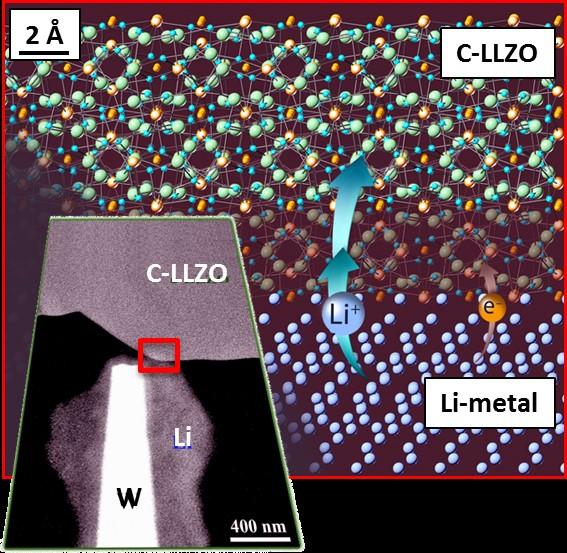
A self-limiting instantaneous phase transformation was discovered at the rarely existing benign interface between a SE (c-Li7–3xAlxLa3Zr2O12 (c-LLZO)) and Li- metal using in situ STEM and electron energy loss spectroscopy (EELS). Inset shows electron microscopy image of a Li-coated tip in contact with the SE; red rectangle indicates region of schematic drawing.
Scientific Achievement
A self-limiting phase transformation was discovered between a solid electrolyte (SE) and Li-metal using real time, in situ scanning transmission electron microscopy (STEM).
Significance and Impact
This new strategy can be used to design stable and conductive interfaces, leading to safer, high-performance batteries.
Research Details
– An interfacial reaction was observed in situ upon contact of metallic Li with the SE. – Simultaneous implantation of Li ions and electrons results in the formation of a self-limiting stable interphase ~5 unit cells thick that prevents further interfacial reaction.C. Ma, Y. Cheng, K. Yin, J. Luo, A. Sharafi, J. Sakamoto, J. Li, K. More, N. Dudney, and M. Chi, “Interfacial Stability of Li Metal – Solid Electrolyte Elucidated Via In Situ Electron Microscopy,” Nano Lett. 16, 7030 (2016). DOI: 10.1021/acs.nanolett.6b03223.



